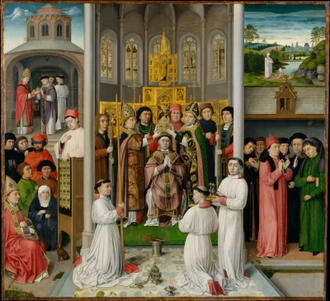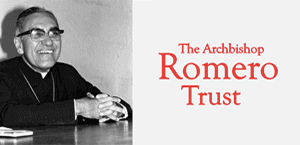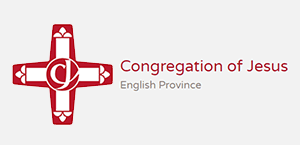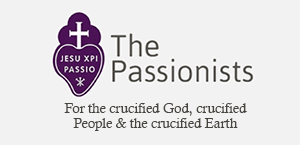Gospel in Art: Feast of Saint Augustine, Doctor and Bishop

Scenes from the Life of St Augustine of Hippo, by Master of St Augustine, Bruges,1490 © Cloisters Collection. Metropolitan Museum, New York
Source: Christian Art
Gospel of 28 August 2023
Matthew 23:13-22
Jesus said: 'Alas for you, scribes and Pharisees, you hypocrites! You who shut up the kingdom of heaven in men's faces, neither going in yourselves nor allowing others to go in who want to.
'Alas for you, scribes and Pharisees, you hypocrites! You who travel over sea and land to make a single proselyte, and when you have him you make him twice as fit for hell as you are.
'Alas for you, blind guides! You who say, "If a man swears by the Temple, it has no force; but if a man swears by the gold of the Temple, he is bound." Fools and blind! For which is of greater worth, the gold or the Temple that makes the gold sacred? Or else, "If a man swears by the altar it has no force; but if a man swears by the offering that is on the altar, he is bound." You blind men! For which is of greater worth, the offering or the altar that makes the offering sacred? Therefore, when a man swears by the altar he is swearing by that and by everything on it. And when a man swears by the Temple he is swearing by that and by the One who dwells in it. And when a man swears by heaven he is swearing by the throne of God and by the One who is seated there.'
Reflection on the Altar Panel
Today we celebrate the Feast of Saint Augustine (354-430 AD), Bishop and Doctor of the Church. Theologian and philosopher, he influenced the development of the early Church in a major way, and continues to influence do so now. His autobiographical work, the Confessions, consists of 13 books, written in Latin between 397 and 400. It is widely seen as the first Western autobiography ever written and outlines Saint Augustine's sinful youth and his powerful conversion to Christianity.
His other hugely influential work is The City of God. After Rome had fallen in 410, pagans alleged that the event was due to Christianity's rising influence. Augustine composed The City of God as a response, both rebutting this position and offering a Christian view of history. In the work he lays out a theological framework which contrasts what he calls the 'City of God' with the 'city of the world', outlining a teleology of each. Most centrally, this work offers insight into the proximate nature of what can be accomplished in earthly government, coloured with both realism and optimism.
Our painting from circa 1490 was the central panel of a triptych dedicated to Saint Augustine. The composition is divided into five scenes:
in the center, Saint Augustine is consecrated bishop of Hippo Regius, a Roman city in present-day Algeria;
in the upper left, Saint Augustine is ordained as a priest;
in the lower left, Saint Augustine preaches while his mother, Monica, anachronistically says the rosary, a prayer regimen of the late Middle Ages;
in the upper right, Saint Augustine converses with a boy who says that filling a hole in the sand with the sea is no more difficult than explaining the Trinity;
and in the lower right, Saint Augustine preaches.
Also note the detailed and richly depicted varieties of ecclesiastical vestments and altar implements.
"To fall in love with God is the greatest romance;
to seek him the greatest adventure;
to find him, the greatest human achievement."
- Saint Augustine
LINKS
Gospel in Art: https://christian.art/
Today's reflection: https://christian.art/daily-gospel-reading/matthew-23-13-22-2023/


















